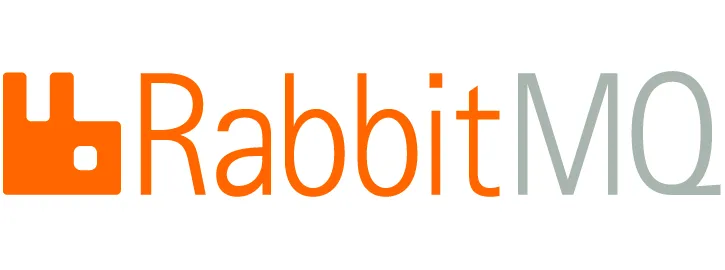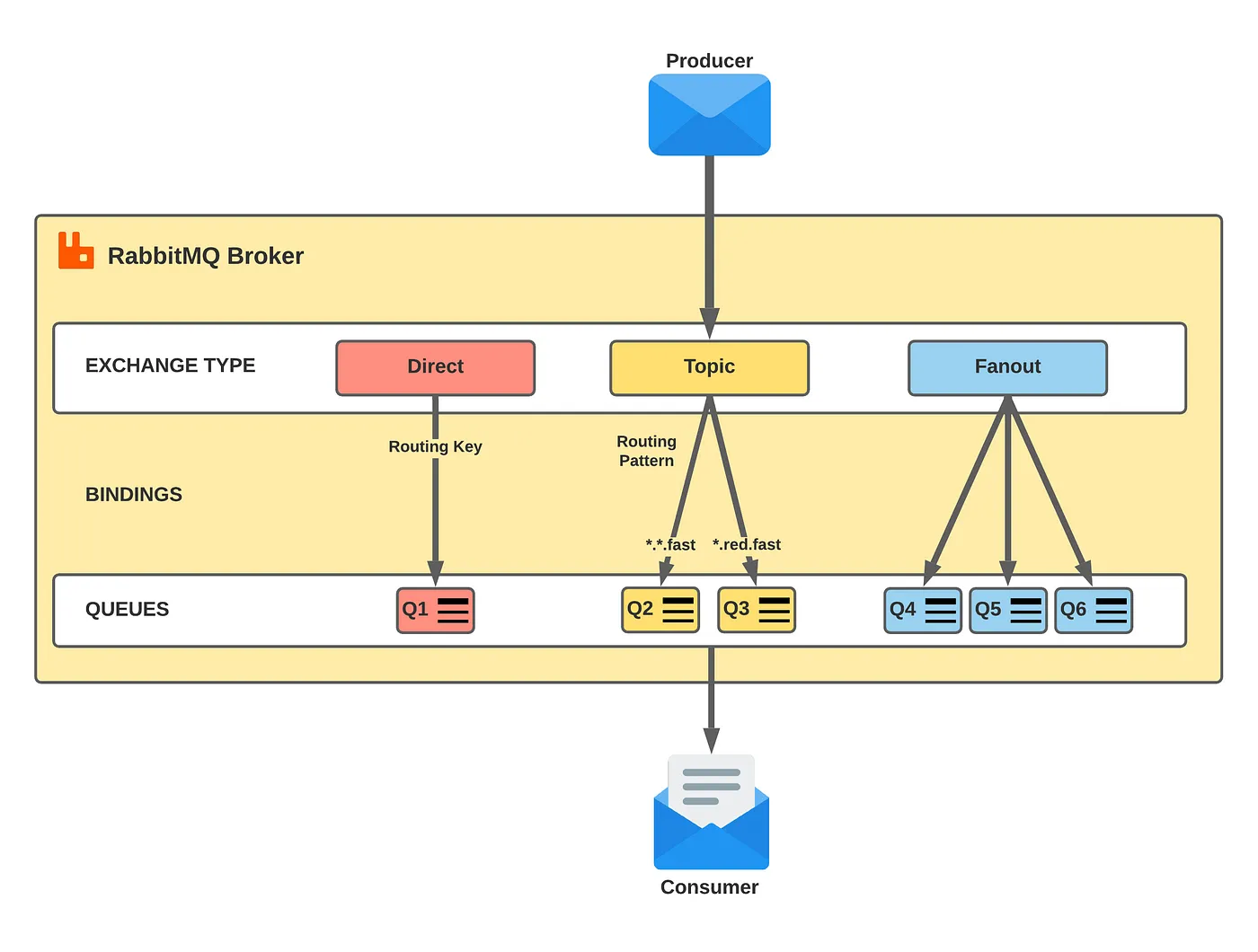Message Broker: RabbitMQ
In this article, I will try to provide a simple introduction to RabbitMQ. To define it briefly, RabbitMQ is an open-source message queuing system. Written in the Erlang programming language, RabbitMQ was initially developed for messaging systems. However, over time, as application scales grew, request volumes increased, and response times became longer, RabbitMQ started being preferred to prevent service disruptions. We observe RabbitMQ and its alternatives being used in various high-traffic projects across multiple sectors, including banking, insurance, and e-commerce.

How Does RabbitMQ Work?
Similar to Redis, RabbitMQ follows a Publisher/Subscriber model. In RabbitMQ, the Producer acts as the Publisher, and the Consumer acts as the Subscriber. A RabbitMQ broker operates between the Producer and Consumer. The data sent by the Producer first reaches the Exchange Type it is connected to within the broker.

If the binding key defined in the message matches the binding key of a queue, the message is sent to that queue. Queues operate in a FIFO (First In, First Out) manner, ensuring that connected Consumers receive messages in this order. Now, let’s take a look at RabbitMQ’s different Exchange Types. Unlike Redis and Kafka, RabbitMQ provides three distinct Exchange Type solutions:

Direct Exchange
In this model, the message sent by the Producer contains a routing key. The Direct Exchange routes the message to the queue whose routing key matches, and then the queue delivers the message to its connected Consumer.
For example, in the diagram below, the message sent by the Producer includes a routing key, and it is transmitted using the Direct Exchange method. The queue with the matching key receives the message and delivers it to its linked Consumer.

Topic Exchange
With Topic Exchange, the goal is to send the message to one or multiple queues. The message is routed to the appropriate queue(s) based on pattern-matching rules on the routing key.
If multiple Consumers are interested in the same type of message, Topic Exchange is the best approach. As shown in the diagram, the routing key contains three different segments, and the message is being transmitted using Topic Exchange. There are two queues that match this pattern. These queues allow flexible pattern matching, except for specifically defined segments. However, the third queue does not receive the message because the third segment in its routing pattern (new) does not match the message’s routing key.

Fanout Exchange
This exchange type is commonly used for broadcasting messages. It does not use a routing key. Instead, any message sent by the Producer is delivered to all queues connected to the Fanout Exchange, and each queue then delivers the message to its linked Consumer.
As shown in the diagram, since there is no routing key, all queues connected to the Fanout Exchange receive the message and pass it to their respective Consumers.

Experimenting with RabbitMQ
If you want to simulate RabbitMQ’s operation online, you can use the tryrabbitmq simulator. You can also install a RabbitMQ broker on your preferred environment and experiment with it. RabbitMQ can run on a single node or as a cluster across multiple nodes.
Unlike systems with a Master/Slave architecture, RabbitMQ does not require electing a new master if one of the nodes fails. Instead, the system continues running without any downtime.
Conclusion
If you need a scalable system, do not require real-time processing, and want to minimize server costs, RabbitMQ is one of the best options. In this article, I have provided an overview of RabbitMQ and its key concepts. I hope you found it useful. See you in my next article!